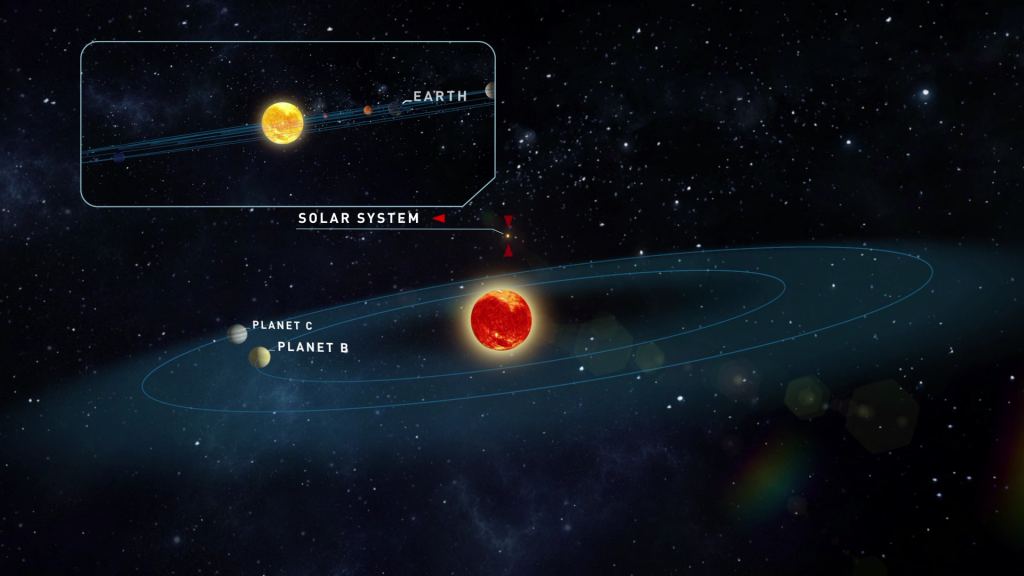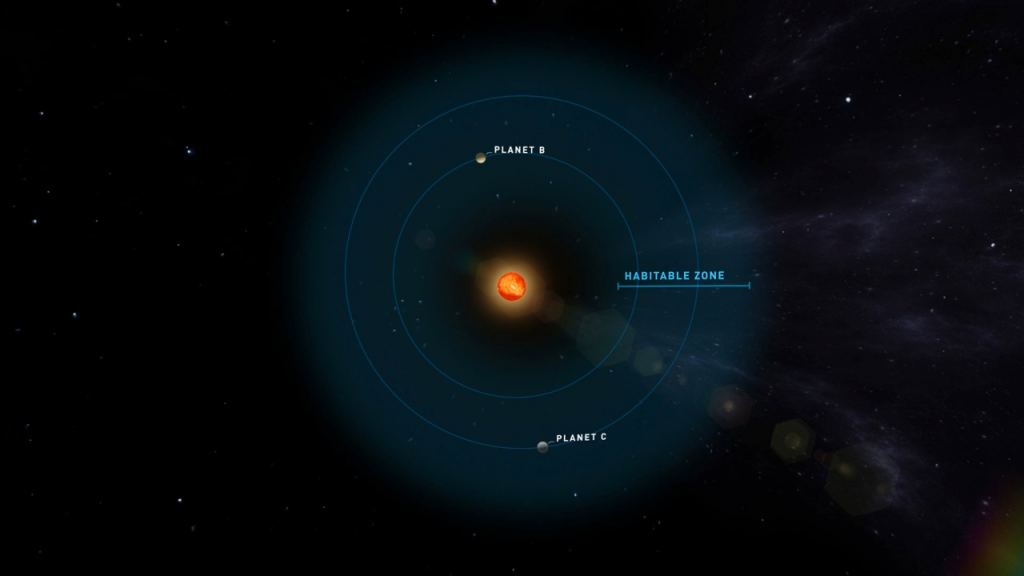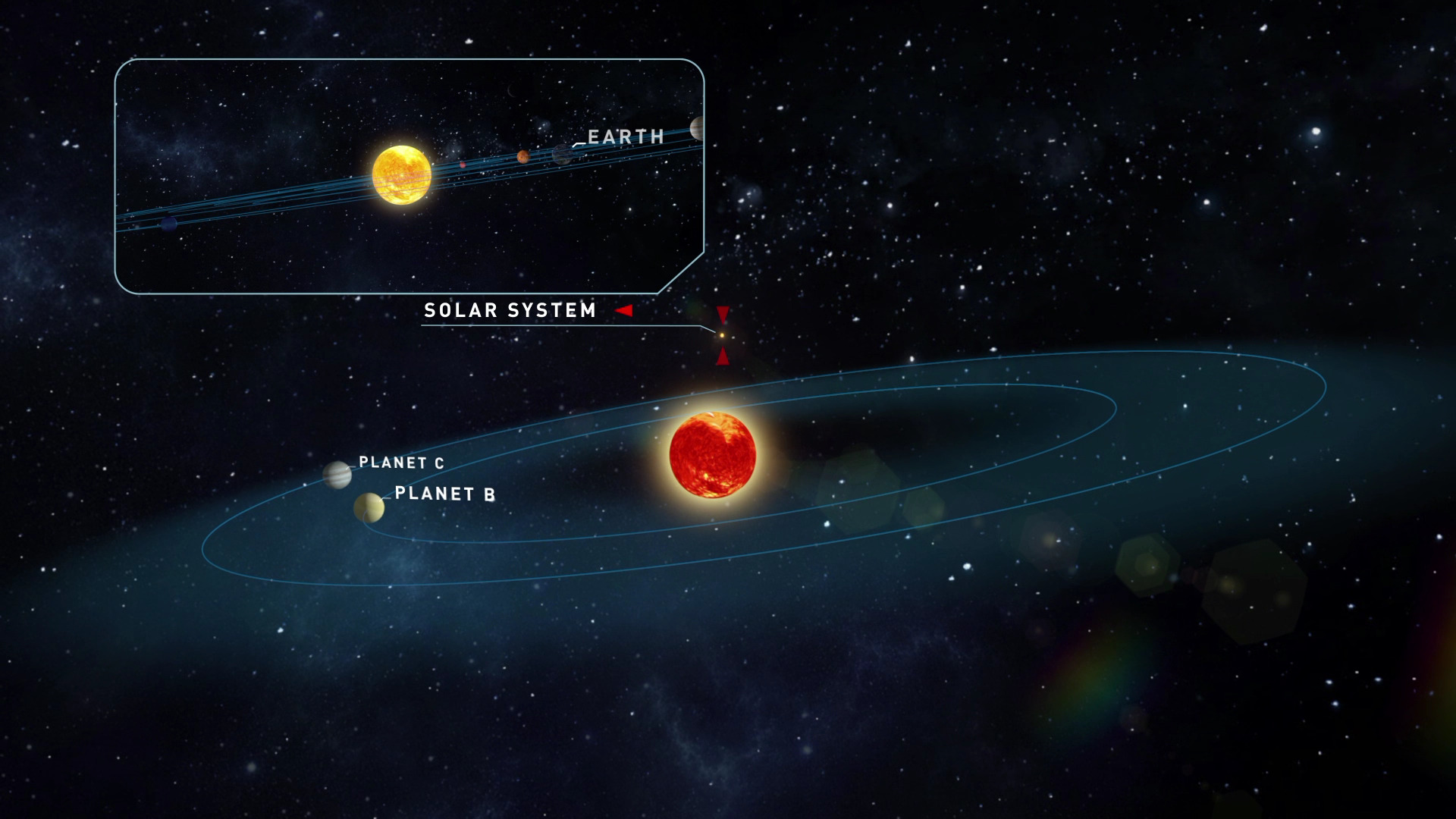In the past few decades, there has been an explosion in the number of planets discovered beyond our Solar System. With over 4,000 confirmed exoplanets to date, the process has gradually shifted from discovery towards characterization. This consists of using refined techniques to determine just how likely a planet is to be habitable.
At the same time, astronomers continue to make discoveries regularly, some of which are right in our cosmic backyard. For instance, an international team of researchers recently detected two new Earth-like planets orbiting Teegarden’s Star, an M-type (red dwarf) star located just 12.5 light-years from the Solar System in the direction of the Aries constellation.
The discovery was made using the CARMENES high-resolution spectrograph at the Calar Alto Observatory in southern Spain. This next-generation instrument was built to carry out the survey of over 300 main sequence stars with the goal of detecting low-mass planets in their habitable zones. This is done through the Radial Velocity method.

Also known as Doppler Spectroscopy, this method involves observing a star for signs of “wobble”, which is an indication of gravitational forces (caused by planets) acting on it. By measuring the velocity at which the star moves back and forth, astronomers are not only able to discern the presence of planets, but get a good idea of their mass as well.
The research team described their work in a study that was recently published in the journal Astronomy and Astrophysics. The team was led by Mathias Zechmeister, a researcher from the University of Göttingen, and consisted of members from the CARMENES consortium, which consists of 11 research institutions and universities across Europe, the United States and Japan.
As they state in their study, Teegarden’s Star is a particularly cool and low-mass red dwarf, with just one-tenth of the Sun’s mass and a surface temperature of 2,700 °C (4890 °F). Because of its faintness, it was only discovered in 2003, despite its proximity to our Solar System. In order to detect any potential planets orbiting it, the team had to monitor this star for three years to look for periodic variations in its velocity.
These observations were collaborative in nature, involving the IAC’s Carlos Sánchez Telescope at the Teide Observatory, the Las Cumbres Observatory‘s network of telescopes, and many others. In the end, the observations detected two planets orbiting the star were terrestrial (rocky) in nature. As Zechmeister explained in a recent University of Göttingen statement:
“The two planets resemble the inner planets of our solar system. They are only slightly heavier than Earth and are located in the so-called habitable zone, where water can be present in liquid form.”

Because these two exoplanets are similar to the Solar System’s inner planets, the team suspects that they may be part of a larger system orbiting Teegarden’s Star. And interestingly enough, any intelligent life living in this planetary system would be able to detect planets orbiting the Sun because of the way their star is oriented with our own.
In short, our Solar System could be viewed edge-on from the Teegarden’s Star system, which means that planets passing in front of the star would be detectable using the Transit Method (aka. Transit Photometry). Unfortunately, the reverse is not true, since Teegarden’s Star is too dim and too small for planetary transits to be effectively observed.
The fact that astronomers were able to detect any planets at all around this low-mass,
As an instrument specifically designed to look for low-mass planets around M-type stars, this discovery serves as an effective demonstration of its planet-hunting abilities. Since 2016, German and Spanish scientists have been searching for planets around nearby stars and these discoveries constitute the tenth and eleventh discovered by the project so far.
Be sure to check out this video which provides a virtual tour of the Teegarden’s Star system and our own, courtesy of the University of Göttingen:
Further Reading: IAC, University of Gottingen, Astronomy & Astrophysics


Does Teegarden’s Star flare? That would render the “habitable zone” so inhospitable to our kind of life. I imagine further long term study is needed. But if not, the age of this system leaves me fascinated about the possibility of civilization more than a billion years older than ours.